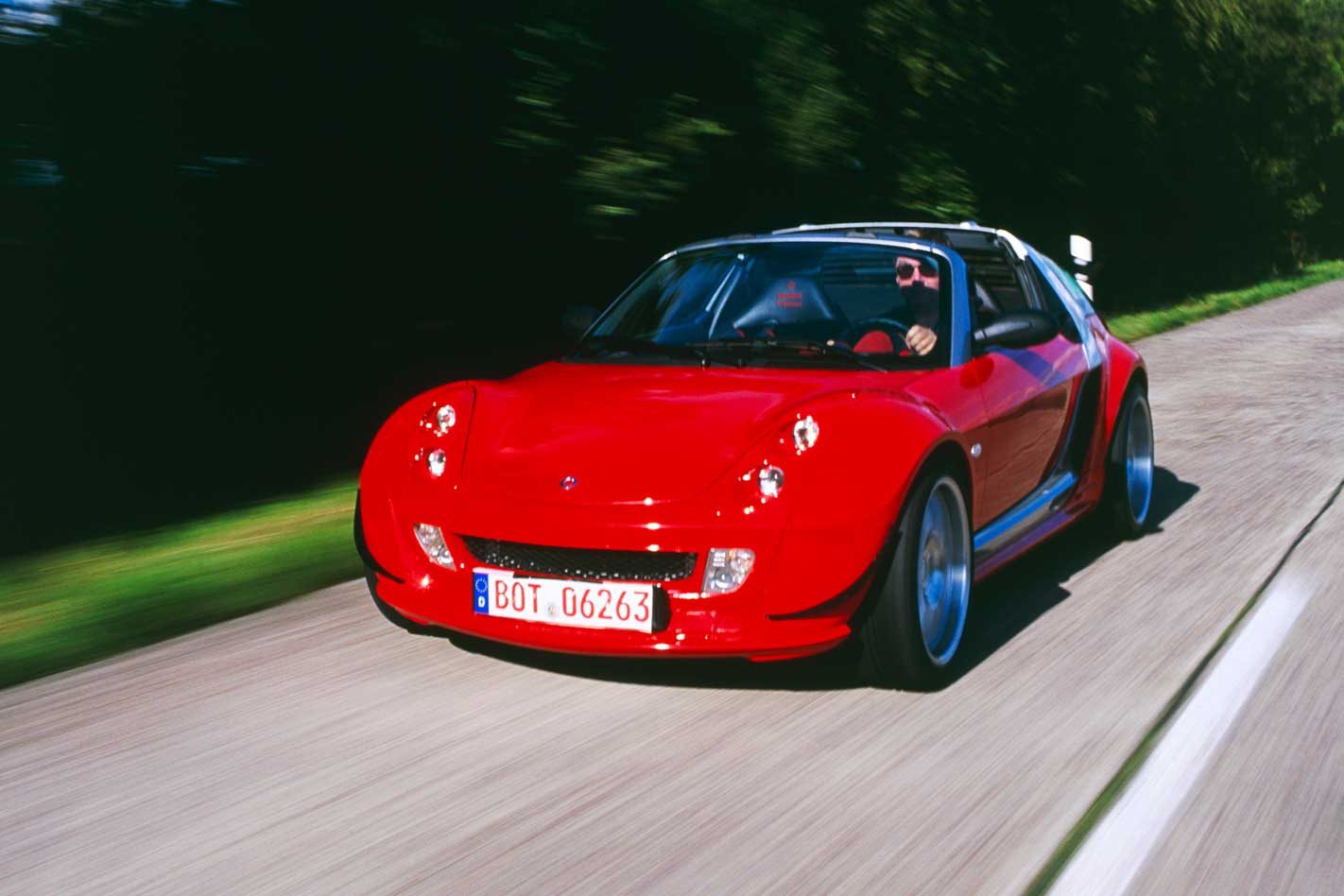The project was top secret. Only the inner circle of the Mercedes Car Group had been informed about it; only a handful of sworn-in engineers and mechanics knew the true nature of the products they were working on.
This feature was originally published in MOTOR’s January 2004 issue
First discussed by the core smart management over a few beers late last year, project PD6TF officially kicked off on February 20, 2003. When asked what the codename stood for, smart told suppliers that they were considering a Dakar rally raid vehicle with a turbocharged six-cylinder engine.
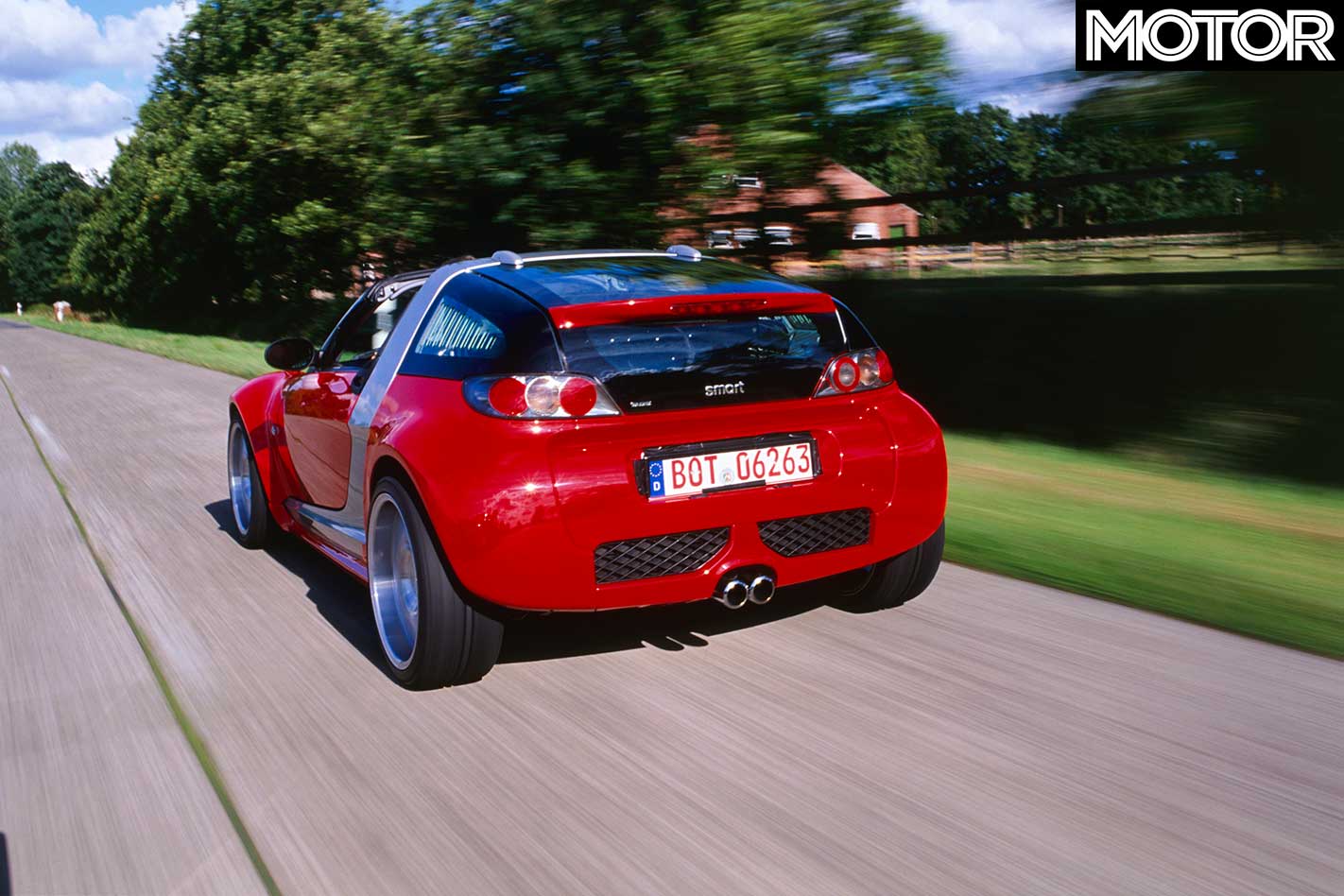
“I still can’t believe this thing is now a runner,” says Ulrich Gauffrés, a former Mercedes-Benz power broker who now heads the Brabus R&D team. “After all, the car was developed in record time – complete with a brand new engine.”
The chief motivation behind the little red runabout is to demonstrate that the scope of the smart brand stretches way beyond the city-coupé (soon to be rebadged fortwo) and the upcoming forfour. “We knew the roadster could handle a lot more power,” says engineering and design director Horst Dahm. “But even the optimists among us didn’t expect the end result to be quite so much fun.”
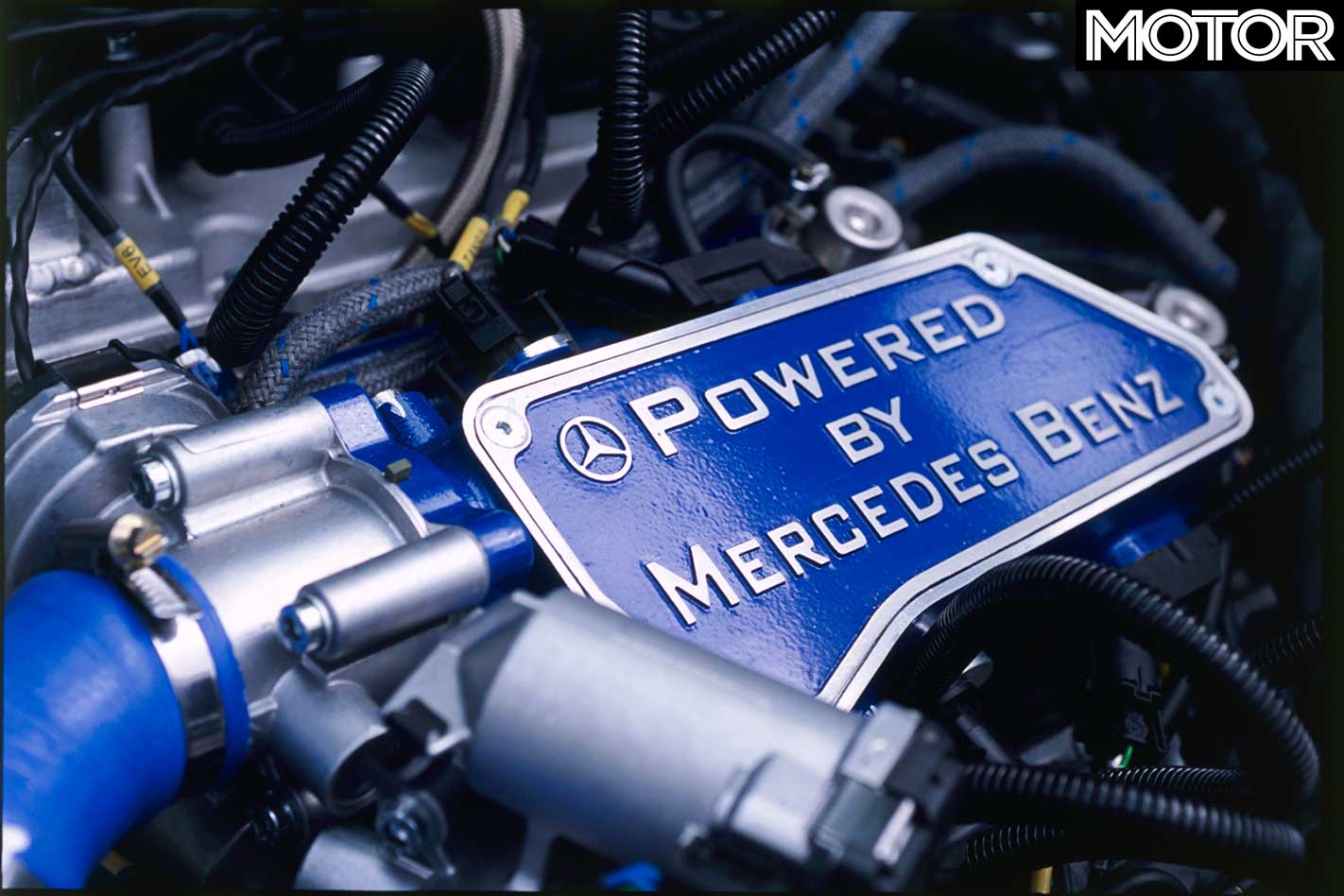
The most obvious difference between a regular three-cylinder roadster-coupé and this red riot special is, of course, the V6 engine – developed by Mercedes-Benz, a company normally not known for flexibility and ultra-quick execution. Beautifully detailed, the compact 1.4-litre V6 sits proud in an engine bay that looks more like a display area than a work station, covered by a glass tailgate.
The new V6 consists of two 698cc smart three-cylinder engines mated at a 60-degree angle. Maximum power is now 125kW at 5500rpm, and the torque curve peaks at a healthy 220Nm between 2250 and 4500rpm.
Mated to an automated sequential five-speed transmission, the busy twin-turbo unit propels the lightweight 840kg two-seater to 100km/h in a hand-timed 5.7sec. Top speed is an equally impressive 225km/h.
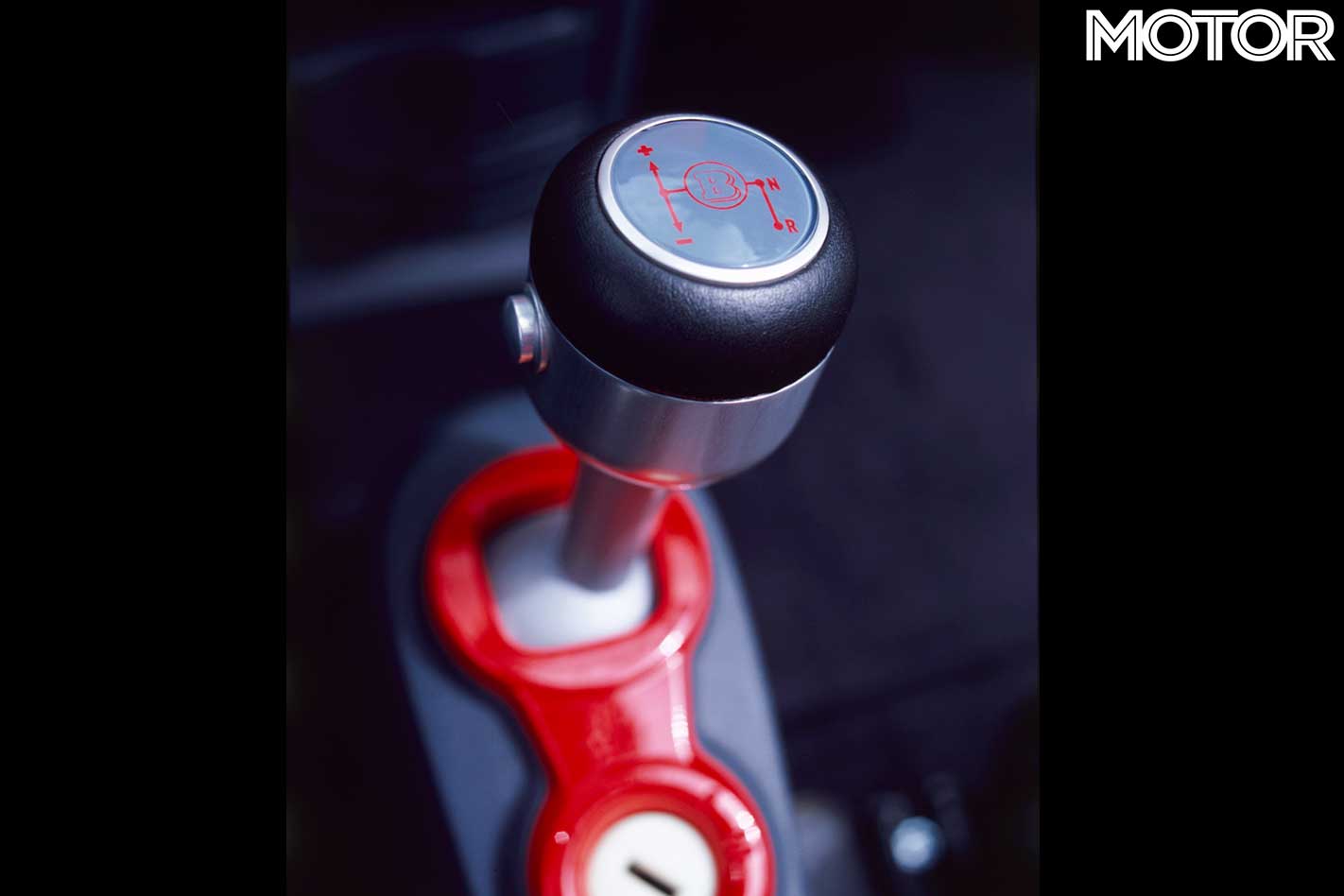
The most dramatic suspension-related surgery is to the de Dion rear axle, which now features struts instead of separate spring and damper units. The whole arrangement has been reinforced and modified to accommodate an additional mounting point and the relocated generator. Also new are the water pump, exhaust system and the whole turbo circuit, which consists of two blowers connected to a single air-to-water intercooler.
Externally, the Brabus-liveried smart gets the usual mix of deep front spoiler and sill extensions, plus a butch rear apron, a dual-exit exhaust, a pair of side flaps and two small black air deflectors attached to the leading edges of the front guards. The polished 10-spoke 17-inch alloys are shod with 205/40 R17 and 225/35 R17 Michelin Pilot Sport tyres.
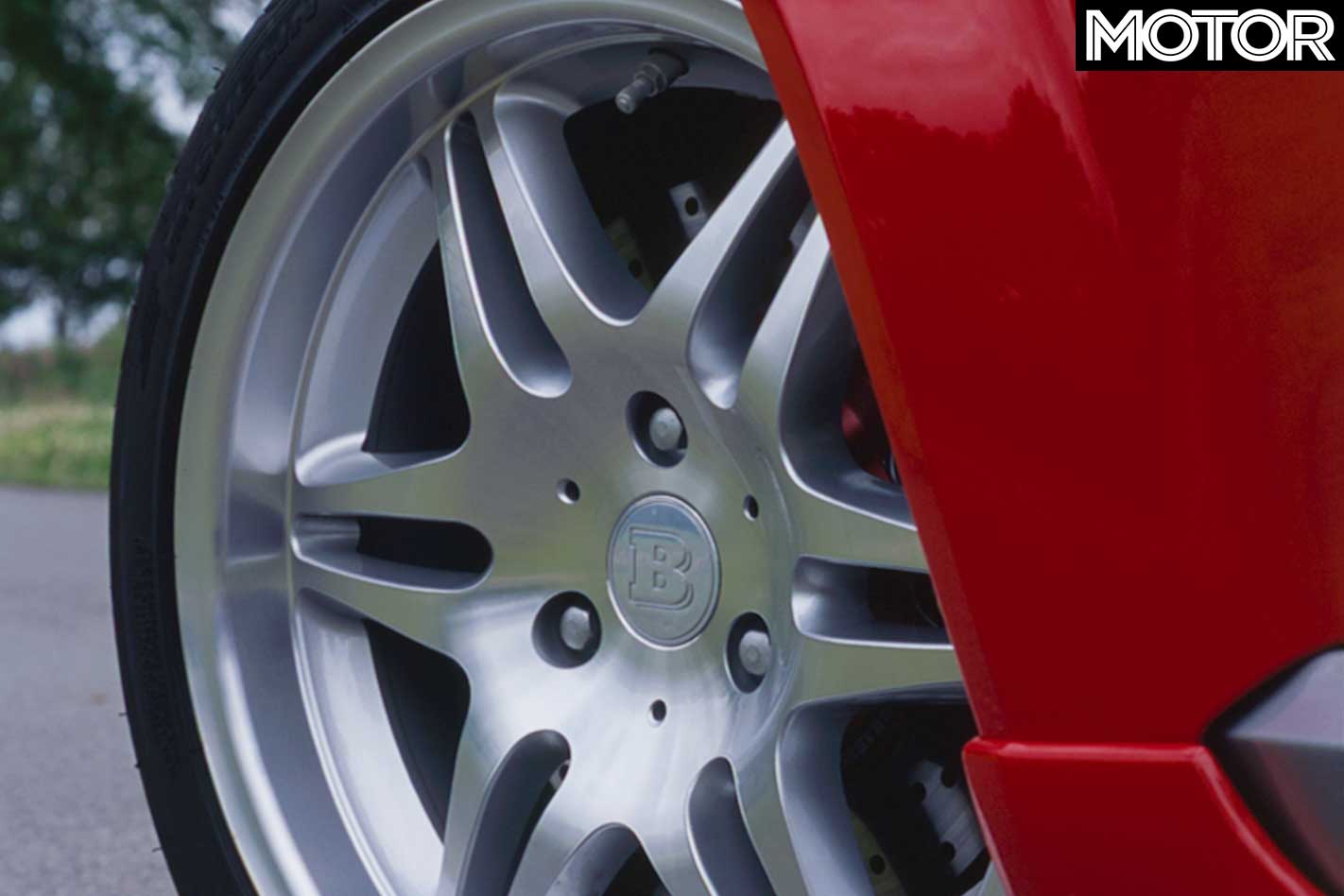
The smart V6’s first official test drive begins with a brief shouting match between starter and engine that leads to a high-pitched idle-speed purr. Massaging the throttle triggers an almost orchestral cascade of tunes and tones that’s spine-tinglingly catchy.
First gear spins to 6500rpm in no time at all, and before my lazy index finger can reach for the upshift paddle, the obliging black box whips in second gear. Zei-zing! The noise is incredible, the high-pitched wail pushing the decibel meter way beyond the legal limit. The high-rev boost-off, boost-on duet is matched by a deep-voiced ooh-aah whenever you take your foot off the accelerator.
No doubt about it: the jam session played by the 12-valve smart V6 would pull a bigger crowd than any Ferrari, Lamborghini or Maserati. You want to crank up the volume? Then take off the roof panels and treat yourself to some rare acoustic ecstasy.
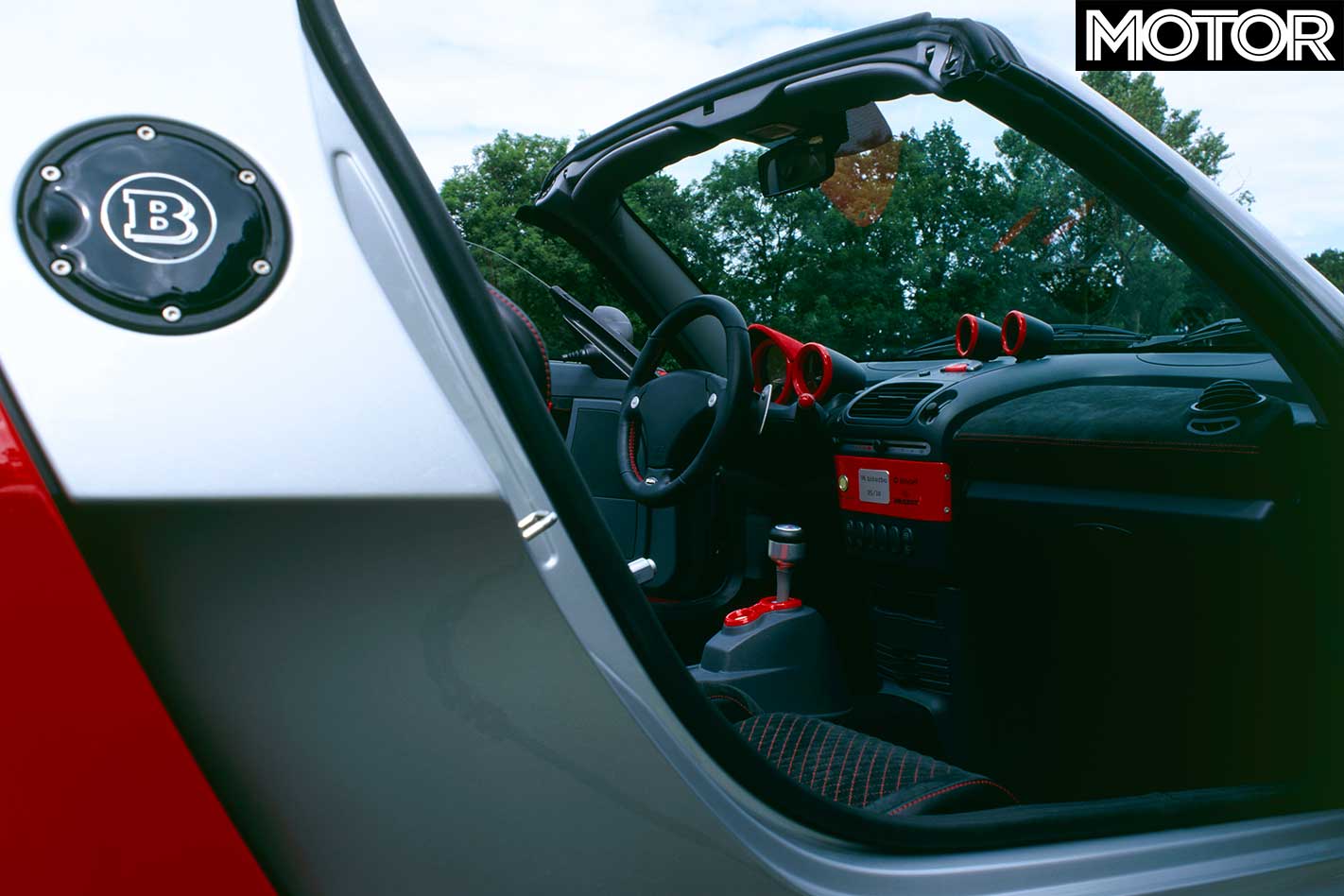
On the track, although the biturbo smart doesn’t feel particularly fast, it’s commendably nimble, chuckable and always game for anything. The unassisted rack and pinion steering is a little heavier than expected, but its gearing is quick enough to let you tackle 90-degree corners without tying a knot in your arms.
The evenly balanced 50:50 weight distribution is the key to the fact that this car handles like a slot racer. With maximum torque available at low to medium engine speeds, third-gear powerslides soon become the preferred cornering attitude. In the dry, it takes a sudden mid-corner lift-off manoeuvre to upset the confidence-inspiring balance.
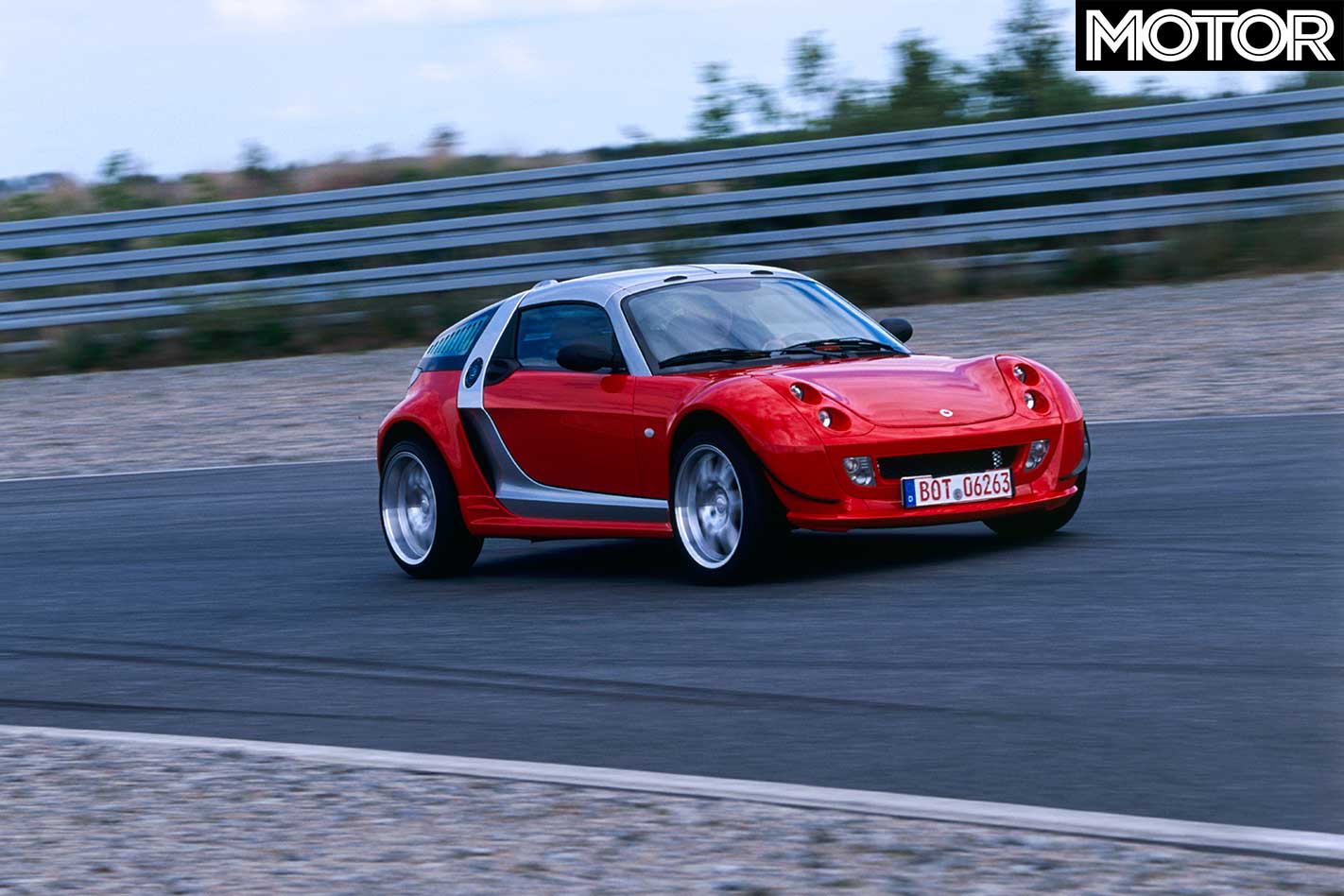
Inside, the seats are slim racing buckets trimmed in black alcantara with red diamond stitching and red four-point shoulder harnesses. Nice detail touches include black suede dashboard inserts, drilled stainless steel pedals and a jazzy instrument shroud made of red alcantara.
The red-rimmed speedometer and miniature rev counter (redlined at 6500rpm) are joined by a water temperature readout on top of the dash and, next to it, a boost pressure gauge. Its sweet spot is at 1.1bar; anything above 1.4bar falls prey to the wastegate.
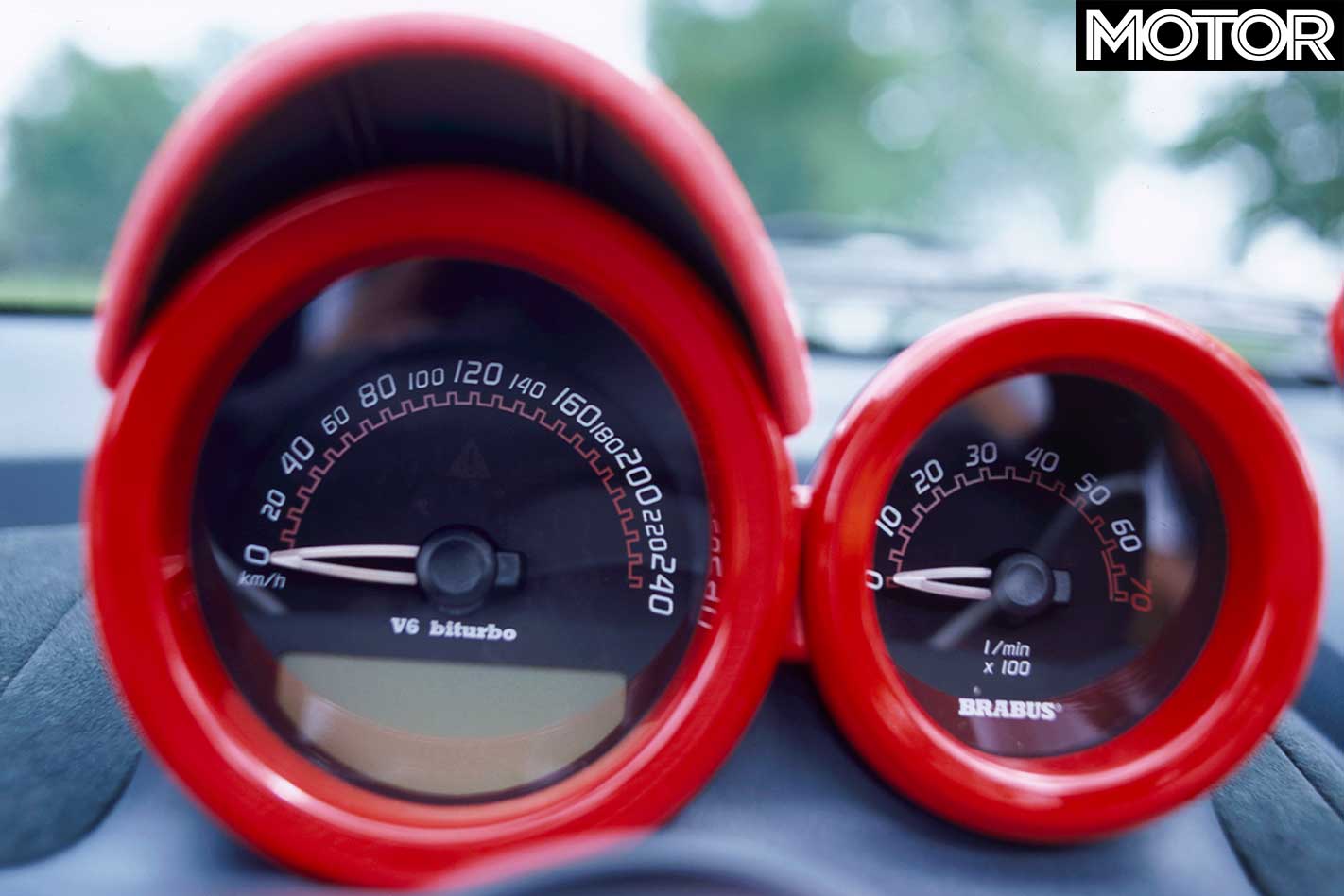
There’s plenty of leg and headroom behind the height-adustable three-spoke steering wheel, but both the radio and air conditioning are conspicuous by their absence – the latter for packaging reasons, the former because it would only interfere with the engine’s inimitable sound of music.
Even though it lacks any luggage space (the relocated fuel tank taking up the front boot area), air-con or sound insulation, this no-frills roadster has the rare talent of making people smile. Not only is it ferociously quick, but it also provides the kind of raw driving pleasure that is increasingly hard to find in this electronic age.
Electrifying handling, addictive acoustics and cutesy looks add up to the kind of I-want-one appeal you’d never have expected from a however distant relative of the dinky city-coupe.
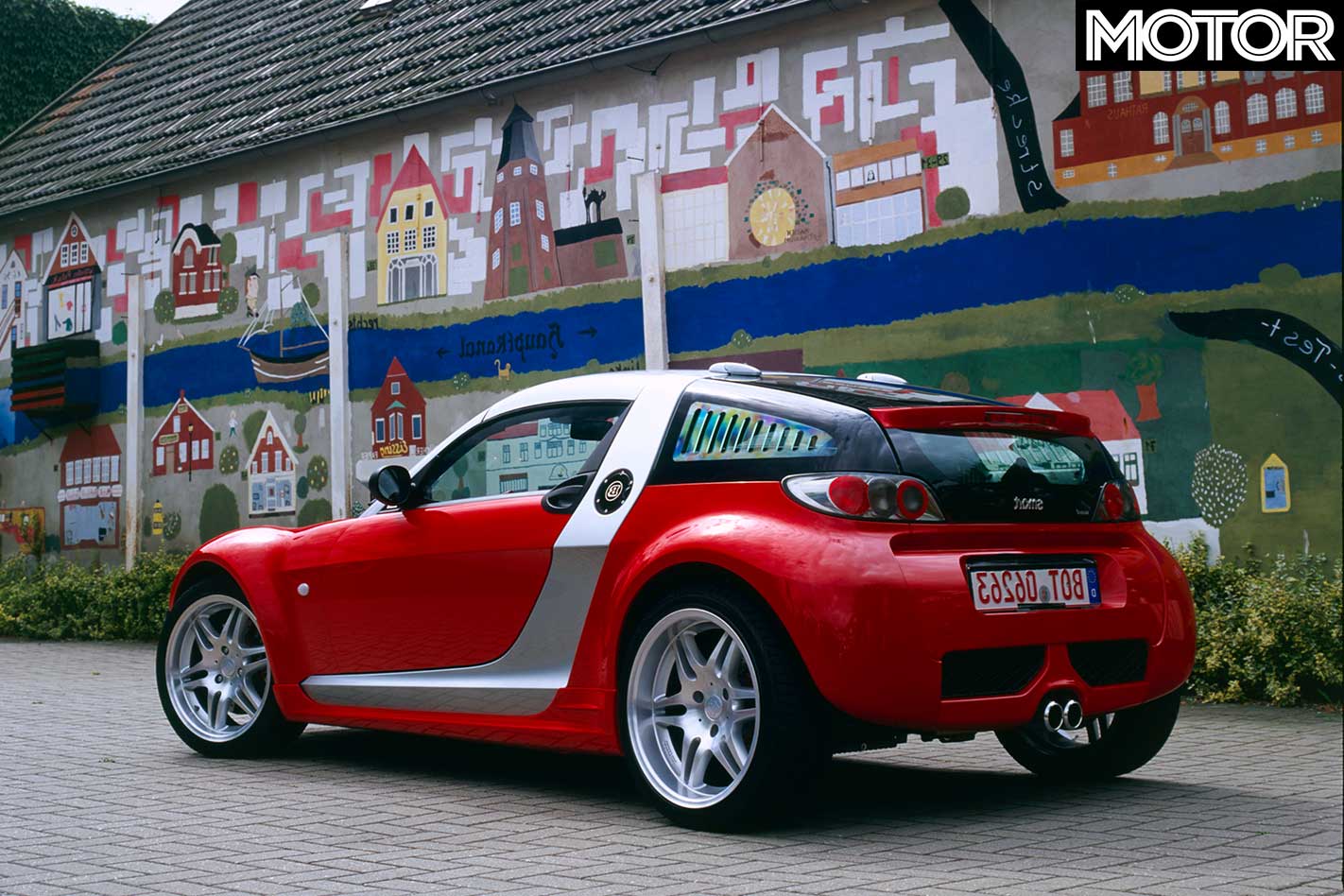
FAST FACTS 2004 Brabus Smart V6 Roadster
BODY: 2-door roadster DRIVE: rear-wheel ENGINE: 1.4-litre SOHC 12-valve V6 POWER: 125kW @ 5500rpm TORQUE: 220Nm @ 2250-4500rpm COMPRESSION: 9.0:1 BORE/STROKE: 66.5mm x 67.0mm WEIGHT: 840kg POWER-TO-WEIGHT: 147kW/tonne TRANSMISSION: five-speed semi-auto SUSPENSION: MacPherson struts, lower wishbones, coil springs, anti-roll bar (f); struts with de Dion tube, coil springs, anti-roll bar (r) L/W/h: 3427/1615/1192mm WHEELBASE: 2360mm TRACK: 1357mm (f), 1392mm (r) BRAKES: 315mm vented discs, one-piston calipers (f); 290mm vented discs, one-piston calipers (r), ABS WHEELS: 17 x 6.5-inch (f), 17 x 8.0-inch (r), alloy TYRES: Michelin Pilot Sport, 205/40 R17 (f), 225/35 R17 (r) FUEL: 50 litres, ULP PRICE: $65,000 (est)
Will they or won’t they?
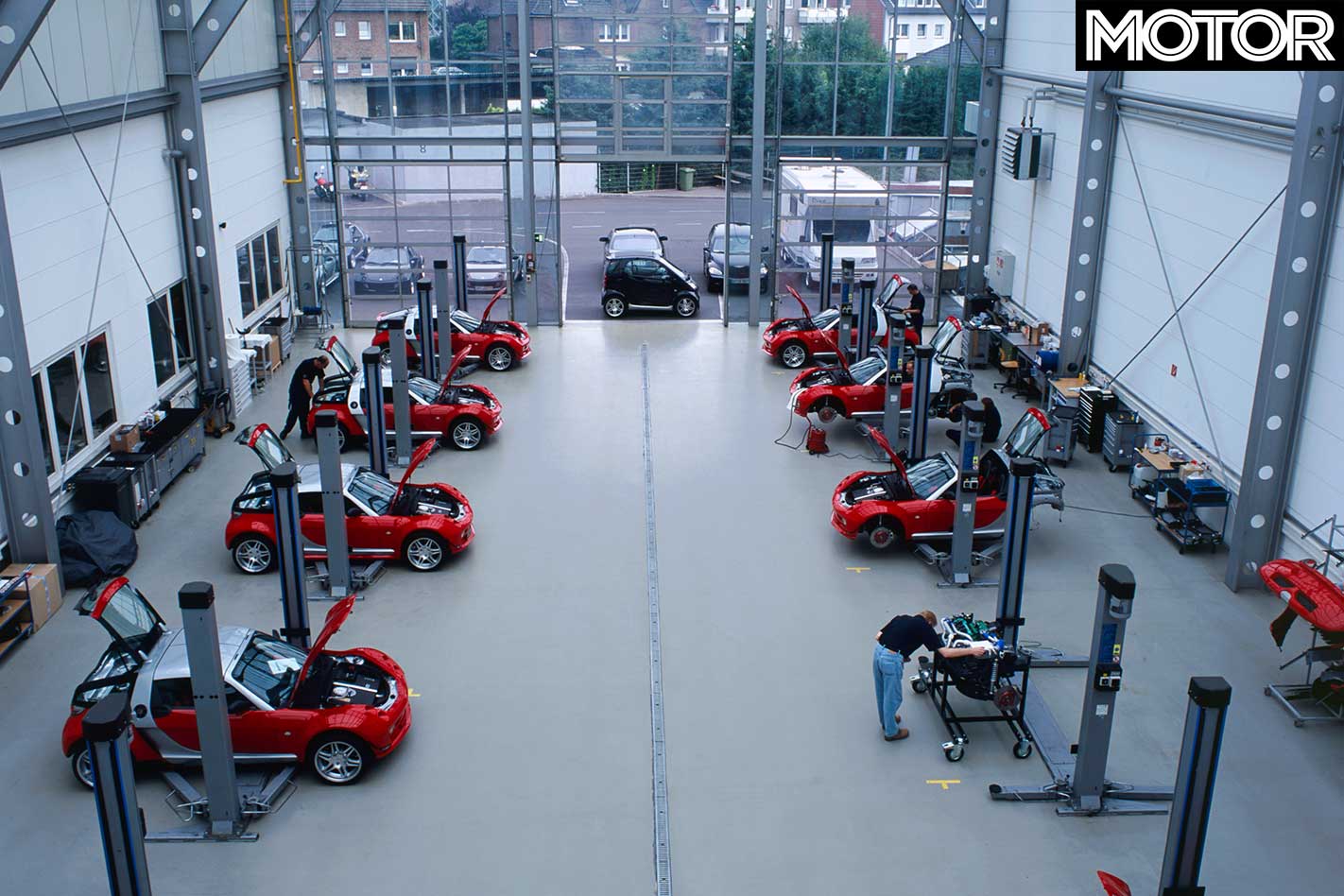
In a cordoned-off section of Brabus’s workshop, an area as surgically clean and elaborately equipped as a F1 garage, a batch of 10 roadsters are in various stages of completion.
“Here are all the V6 smarts you are ever going to see,” starts Heinz Gottwick, the senior PR officer of the Micro Compact Car Company. “They are not street legal, they were not designed for low-volume production, and they will not compete in motorsport. They are hand-made show cars.”
Bollocks they are. “We put too much money and effort into this project to keep it a one-off,” confesses Brabus R&D boss Ulrich Gauffrés later. “That’s why we decided to build 10 of them.”
Neither smart nor Brabus will commit themselves at this point, but the men in charge are born petrolheads. It takes some reading between the lines to decipher the potential game plan, which could mean anything from 200 units to 1000 units at a cost of 40,000 Euros or more.
Five other no-frills roadsters
• Lotus Elise – reinvented the genre for the modern era • Caterham 7 R500 – raw, featherweight and mental • Westfield XTR2 – how does 0-100 in 3.1 seconds sound? • Porsche Boxster – okay, it’s got frills, but still fabulous • VW Roadster – straight-talkin’ V6 sportster due in ’04

